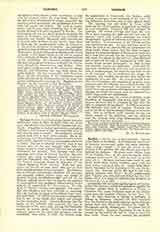

Carrhae, a titular see of Mesopotamia. Carrhae is the Haran of the Bible. It is frequently mentioned in Assyrian monuments under the name Harranu, which means “Road”. It was the center of the worship of the goddess Sin (the Moon), and was inhabited by Sabeans. Abraham came thither from Ur, in Chaldea (Gen., xi, 31), with his family, which remained there (xxvii, 43) while he went on to Canaan (xii, 1). Rebecca was born there (xxiv, 4), and Jacob lived there during fourteen years with his uncle Laban (xxviii, 2; xxxi, 3). Under King Hezekiah it was taken by the Assyrians (IV K., xix, 12; Is., xxxvii, 12). Ezechiel (xxvii, 23) says it had commercial relations with Tyrus. In the neighboring plain Crassus was defeated and killed by the Parthians (53 B.C.); Emperor Galerius was defeated on the same site (A.D. 296).
Christianity did not make rapid progress at Carrhae. Julian the Apostate, before his expedition against the Persians, resided there in preference to Edessa, a Christian city; under Justinian most of its inhabitants were yet heathen (Procop. De bel. Pers., II, 13). In time, however, it became a suffragan of Edessa in Osrhoene. Lequien (II, 973) mentions from the fourth to the sixth century eleven bishops; among them are: Vitus, the friend of St. Basil, St. Protogenes, and St. Abrahamius. The latter died at Constantinople. Emperor Theodosius II was so impressed by his saintly life that he chose to wear his poor tunic. From the sixth century the Jacobites had at Carrhae a very flourishing Church; Patriarch Michael the Syrian enumerates seventeen bishops from the eighth to the twelfth century (Revue de l’Orient chretien, 1901, p. 197). One Latin bishop is known, but not with certainty (Eubel, I, 282). Carrhae was the residence of Merwan, the last of the Ommiad caliphs, and became the center of a famous Mussulman school, where, in the tenth century, many Greek works were translated into Arabic. Harran, today a village in a wide, barren plain, destitute of trees, is not far from the river Belikh (Bilichus), and about 25 miles from Orfa (Edessa) in the vilayet of Aleppo. Its houses are shaped like sugar loaves and inhabited chiefly by bedouins. There are ruins of a Roman camp, of many churches, and of a fortress dating from the Crusades. Near the village is still to be found the well whence Rebecca was drawing water when Eliezer found her.
S. VAILHE

